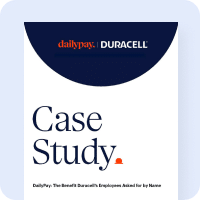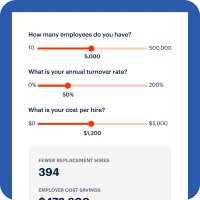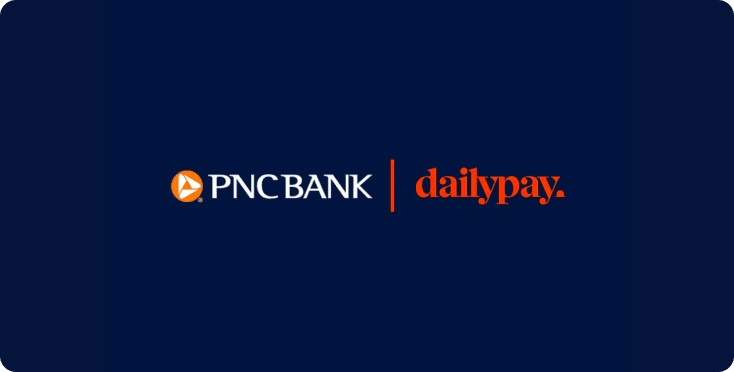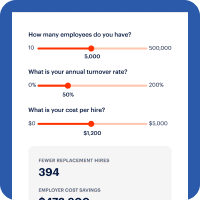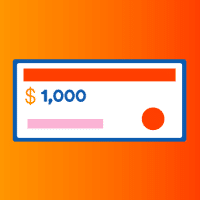How the On-Demand Economy Impacts Payroll Models
The on-demand economy gives rise to on-demand pay. What does that mean?
Uber, Lyft, Doordash — odds are you’ve either used these services or, at the very least, heard of them. Sometimes called the sharing economy, “gig” economy or on-demand economy, the new marketplace for requesting and paying for services has furthered our expectations for instant gratification.
As a byproduct, the gig economy is also changing the way workers get paid for those services. As services are expected to be on-demand, pay is too.The ”Payroll on demand” term was coined as businesses sought flexible payment options to meet employee demand for quicker access to their earnings, blending financial technology with workforce needs.
With modern technology, employees shouldn’t have to wait weeks to get paid. What are on-demand payment solutions and why are they becoming indispensable?
A Brief History of Payroll
While the development of payroll dates back centuries, the process of actually getting paid in the early days was less than ideal.
Depending on who hired you to do work, it could take weeks, months or even years to receive your pay, and deductions could be taken by employers without cause, meaning workers could be in perpetual debt. There were few laws that governed compensation.
It wasn’t until the 1930s that a formalized payroll process began to take shape and it was nearly a decade after that when tax institutions created regimented pay schedules to help make the process predictable.
In 1957, ADP became one of the first companies to shift from manual to automated payment processing. Automation became even more accessible in the 1980s thanks to the arrival of desktop computers.
While the years that follow mark changes in accessibility and features, the core technology of payroll process hasn’t evolved since its inception, and payment schedules have remained rigid since the 1940s. Its long history of stagnancy shows there is little flexibility to pivot when it comes to payroll.
Why Traditional Payroll Doesn’t Fit a Modern Workforce
An on-demand economy is fueling the desire for workers to be paid faster. After all, the service they provide is just that: fast and readily accessible. However, the gig economy tends to deal with very frequent but small amounts of money, which makes instant payment via traditional methods fee-intensive and cost-prohibitive.
That is precisely why the traditional payroll process isn’t a great fit for the on-demand work economy.
With an on-demand economy, patrons beckon workers with urgency, “come here now. Perform this service for me now.” Under any other circumstance — manual labor for example — a worker would expect to be compensated immediately after completion of the job. But in the gig economy the worker can’t reap the rewards instantly, they must wait to be paid by traditional payroll schedules.
It’s a mismatch.
The gratification for having completed a job satisfactorily is missing, and it’s causing productivity gaps. In fact, 59% of employed Americans, including 70% of hourly workers, say they would benefit from getting paid more frequently than they currently do.1
What Is On-Demand Pay, How Does It Work?
In short, on-demand payments mean that employers give their employees faster access to their pay.
Thanks to modern technology, businesses have the ability to let their employees access their earned pay daily if they want to. With DailyPay, it is no longer necessary to adjust an existing payroll process, sign on with multiple third-party providers, or connect APIs to offer an on-demand payment solution.
DailyPay is non-disruptive and cost-beneficial for businesses to pursue. Earned pay transfers are made through the web application and transferred to bank accounts at the tap of a button. Options like DailyPay allow users to access their earned pay immediately, or on the next business day, which means users have even more control over their personal definition of on-demand.
Why On-Demand Pay is Becoming Indispensable
The excitement around on-demand pay solutions speaks directly to the importance of financial well-being, which is necessary for all industries, and all types of workers.
A startling 61% of American adults live paycheck to paycheck.2 If an unexpected cost arises, or if bills are off-kilter with a pay schedule, the costs can be detrimental.
An Employee Financial Wellness Survey, conducted by PricewaterhouseCoopers (PwC) explains how widespread financial stress is in today’s world.
- 60% of full-time employees are stressed about their finances
- 57% of full-time employees say finances are the top cause of stress in their lives
- Financially stressed employees are nearly five times as likely to admit personal finance issues have been a distraction at work.
Not only does this impact employee mental health, it’s detrimental to employee financial wellness. It translates into workers calling out sick more often, being less productive when they are at work, and filing a higher rate of insurance claims against their employers.
Having access to pay as needed, can spare employees from interest on credit cards, payday loans, and late fees.
In fact, 77% of users surveyed by Mercator said that they believe DailyPay helps them save money by avoiding other more expensive alternatives. And 48% of respondents who had paid their bills late in the past reported that they rarely or never pay bills late since using DailyPay.3 The average transfer from a DailyPay user is only $103.4
The flexibility of on-demand pay helps address the root cause of stress and in turn, makes for a happier employee and a more productive workforce.
What are the Results of On-Demand Payments?
According to users of DailyPay:5
- 67% of users say DailyPay has helped them reduce financial stress
- 49% of users say DailyPay helps them avoid late fees or overdraft fees
- 30% of users say DailyPay helps them gain better control of their finances
- 48% of users say they are more motivated to remain with their current employer because they offer DailyPay
- 52% of users say their opinion of their employer has improved since they began using DailyPay
Cost savings realized across industries
High turnover industries like retail and call centers are among the best candidates for an on-demand payment solution because the value of the benefit translates to employee satisfaction and bottom line growth.
For example, one of the largest contact centers in the United States, DialAmerica, uses DailyPay’s on-demand payment solutions to help boost employee retention and recruitment rates.
It can easily cost several thousand dollars to hire and train a new employee. Lost time and money is only a part of the problem associated with high employee attrition—a tight labor market means that managers are having a harder time finding agents with prior customer service experience or support skills.
DialAmerica signed on with DailyPay to:
- Increase applicant pool
- Decrease overall call center attrition
- Improve employee engagement
DialAmerica found that DailyPay’s novel technology provided a seamless three-way solution to recruit, retain, and increase agent engagement.
DailyPay is a Flexible On-Demand Payment Solution
It is no longer necessary to adjust an existing payroll process, sign on with multiple third-party providers, or APIs to reap the benefits on on-demand payment. Apps like DailyPay are non-disruptive and cost-beneficial for businesses to pursue.
1 Harris Poll Consumer Finances study commissioned by DailyPay and Funding Our Future, 2021:DailyPay, 2020
2 CNBC, 2023:DailyPay, 2020
3 Customer Perceived Savings Report, Mercator Advisory Group commissioned by DailyPay, August 2022:DailyPay, 2020
4 Internal Database, August 2023:DailyPay, 2020
5 DailyPay User Survey, November 2022:DailyPay, 2020

